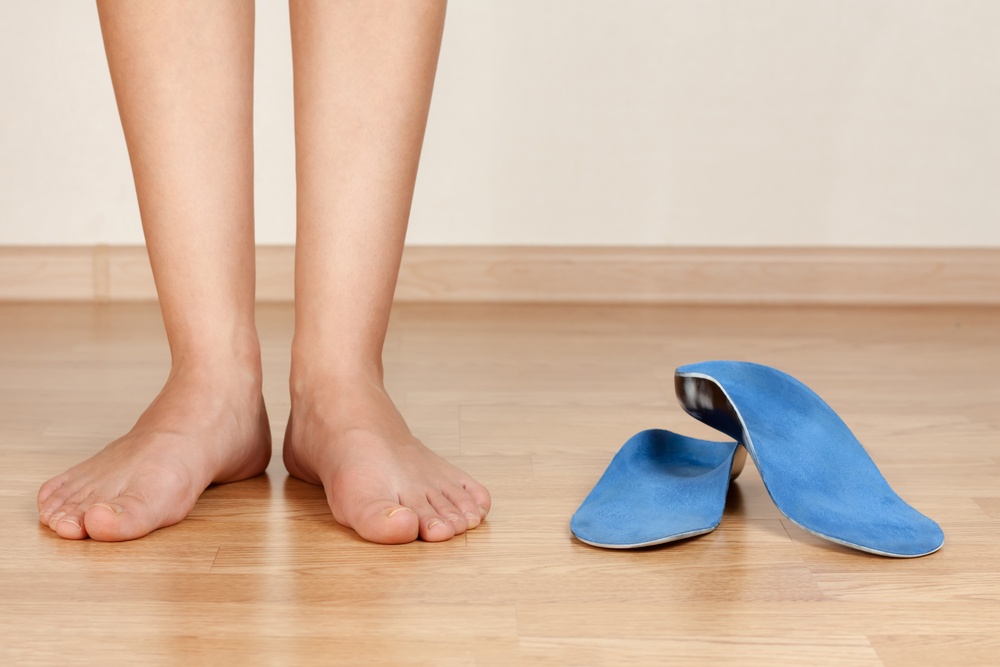Orthotics can be a powerful addition to treatment plans for your foot or ankle condition.
Orthotics are custom supports that can heal injury, correct chronic conditions, and alleviate discomfort. As external devices, they often help patients avoid invasive surgery.
The category of orthotics includes devices for many parts of the body, but the most recognizable form of orthotics to most are foot inserts. You’ve probably seen over-the-counter orthotics in drugstores, but these generally don’t offer the same personalized benefits as custom orthotics. Instead of relying on cheap, ineffective inserts, it’s best to make an appointment with an orthopedic specialist to find out how orthotics can work for you.
HOW DO ORTHOTICS WORK?
Orthotics offer external support for a variety of medical conditions, often to heal an injury or ease pain for an ongoing condition. With some injuries, such as fractures, orthotics may stabilize and strengthen the surrounding area during the healing process. They may also provide support for a structurally weak area, reposition a deformity, or prevent a deformity from worsening. For chronic foot and ankle conditions, orthotics can reduce pain by easing the pressure on the affected area.
Doctors who prescribe orthotics may use casts or scans of your body, along with relevant measurements, to address your particular symptoms. A qualified doctor can help determine what kind of orthotics, if any, are appropriate for your condition.
WHICH FOOT AND ANKLE CONDITIONS BENEFIT FROM ORTHOTICS?
Orthotics commonly provide support and relief for a variety of foot and ankle conditions, from typical issues like high arches to more serious disorders. The following are a few conditions for which doctors may suggest orthotics.
Achilles tendonitis — This common condition often affects athletes. It can be relieved in part by wearing orthotic inserts in looser shoes to help reduce inflammation in the back of the foot.
Ankle pain — A roll or twist in the ankle can lead to ligament or cartilage injury, and supportive orthotics may be an appropriate treatment.
Arthritis — Orthotics may reduce the need for pain medication, and could even facilitate structural adjustments that prevent arthritis from worsening.
Diabetes — Orthotics can help prevent the foot ulcers that are a common symptom of diabetes.
Drop foot — This condition occurs when the muscles are too weak or paralyzed to lift the front part of the foot. Although this may be a symptom of a larger issue, orthotics can often help correct the gait.
Hallux valgus — More commonly known as bunions, this condition may be relieved by custom inserts.
Heel spurs — Caused by abnormal bone growth in the heel, this painful condition can often be treated with orthotics.
Metatarsalgia/Morton’s neuroma — This is a common and painful condition, usually occurring in the ball of the foot, and sometimes caused by wearing narrow shoes. The symptoms may be relieved by wearing orthotics.
Plantar fasciitis — Orthotics are often prescribed for pain on the bottom of the foot, which may be caused by tissue inflammation.
BEGIN THE HEALING PROCESS
If you’re experiencing foot or ankle pain, it’s best to avoid self-diagnoses. At New York Bone & Joint Specialists, your podiatrist will diagnose you with a thorough physical examination often accompanied by x-rays. Many foot and ankle treatment plans rely on conservative treatments that include orthotics.
Athletes of all levels may work with Christine M. Ellie, DPM, a top-rated podiatric surgeon in New York City. She has helped hundreds of patients rehabilitate by analyzing structural issues in the body, providing orthotics, and performing surgery if necessary. She also provides a comprehensive physical therapy plan that works to strengthen the feet and ankles to avoid further injury. Contact us today to make an appointment with Dr. Ellie or one of our other qualified orthopedic specialists.




